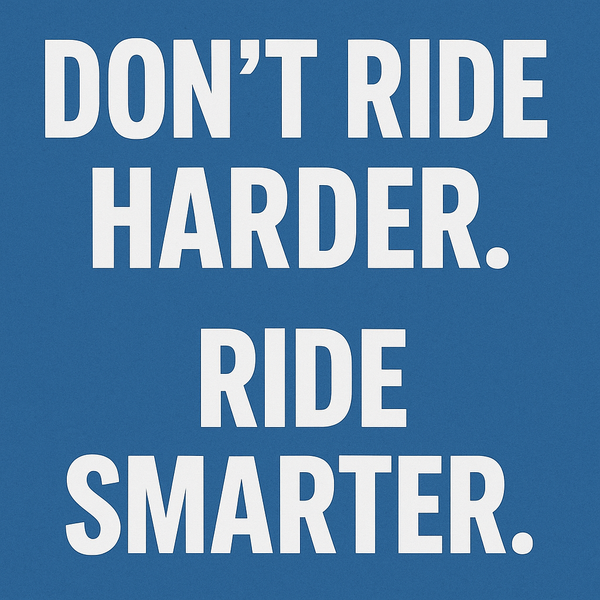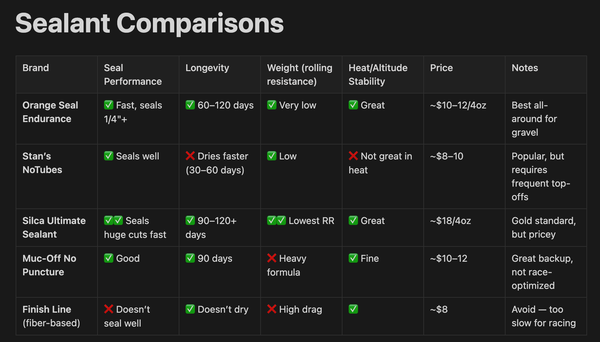No-Drop, No-Bullsh*t: A Ride Leader’s Guide to Psychological Safety and Sustainable Pace

Meet Sarah.
She’s not racing. She’s not flexing. She’s not trying to be the fastest damn thing on two wheels.
Sarah is just trying to belong.
She found a used bike on Facebook Marketplace, picked up a helmet that barely fits, and laced up the same running shoes she wore in her last fight with depression. This is her comeback story in motion. She rolls up to a group ride labeled “no-drop” — which, on paper, promises safety, support, and a break from going it alone.
Instead, by mile three, she’s riding alone. Again.
No words of encouragement. No regrouping. Just the sound of laughter getting farther away.
And that, my friends, is how we lose people — not from fitness, but from hope.
The Psychological Risks of a Poor First Ride Experience
❌ Expectation Violation = Emotional Gut Punch
When we say “no-drop” and then drop people, we don’t just hurt their quads. We violate trust.
According to Burgoon’s Expectancy Violations Theory (2016), breaking expectations — especially ones tied to safety and belonging — creates feelings of shame and betrayal. For Sarah, this isn’t just a pace problem. It’s an identity ambush. She expected community and got abandonment.
❌ Social Comparison = Fast Track to “I Don’t Belong”
When Sarah watches the stronger cyclists surge ahead while she gasps through mile four, she doesn’t just fall behind — she falls apart.
Per Festinger’s Social Comparison Theory (1954), we define our worth through the group. So when the group leaves, so does our sense of place. Cue the inner voice whispering, “You’re not good enough.” That whisper? It’s why people don’t come back.
❌ Emotional Fallout = Quiet Quit
If you’ve ever heard someone say, “Yeah, I tried group rides once… wasn’t for me,” this is what they mean.
They weren’t weak. They were unseen.
They didn’t lack fitness. They lacked support.
And that invisible wound — that combination of shame and fatigue — sticks around far longer than sore legs ever will.
The Biological Realities of Trying to Keep Up
Let’s drop the “it’s not that fast” gaslighting and get honest about what we’re asking of people.
💥 Misaligned Effort = Red Zone Misery
That “easy 16 mph pace” you think is social? It’s Zone 4 terror for Sarah. She’s redlining before the warm-up’s over.
And guess what? Sustained high-intensity effort spikes cortisol and catecholamines, stress hormones that tell the body, “This is a threat” (Ekkekakis et al., 2011). Ride leaders aren’t just pushing pace — they’re flipping fight-or-flight switches in people trying to connect, not compete.
💥 Overtraining = Burnout in Disguise
Ask any new cyclist who’s trying to keep up beyond their ability day after day — what you’ll see is textbook Overtraining Syndrome (Kreher & Schwartz, 2012).
Fatigue. Insomnia. Anxiety. A growing resentment for the very thing they hoped would heal them.
This isn’t just a missed workout. It’s a missed opportunity to build trust, joy, and long-term participation.
The Double Hit: When the Legs and the Heart Can’t Take It
The true damage isn’t just physical. It’s personal.
We’re talking about people like Sarah, who finally found the courage to show up — only to discover that showing up wasn’t enough.
The intersection of social rejection and physical overload is where dreams go to die. That’s not drama. That’s biopsychosocial reality (Meeusen et al., 2013).
So What Do We Do?
The Dr. Grit™ Playbook for Ride Design That Doesn’t Suck
Let’s stop treating inclusion like a suggestion and start treating it like a deliverable.
✅ 1. Set a Time, Not a Trap
Advertise rides by time (e.g., “90 minutes, social pace”), not just distance. It removes the shame math of “I’m the slowest” and replaces it with: “I showed up, I stayed, I finished.”
✅ 2. Transparency Over Ego
If your average pace is 17 mph, say that. If there’s climbing, say that too. Don’t bury the lead. The fastest way to build trust is to tell the truth.
✅ 3. Empathy-Based Leadership
Stop giving ride leadership roles to whoever can crush hills the hardest. Give it to whoever remembers the name of the person who showed up with flat pedals and fear in their eyes. That’s your real MVP.
✅ 4. Start and End With Humanity
Open with names. End with high-fives. Make introductions, ask pronouns, celebrate effort. This isn’t a peloton — it’s a people-ton.
✅ 5. Build Sub-Groups, Not Hierarchies
Let the speed demons go — but give the Sarahs a solid group, a sweeper with a soul, and enough rest stops to actually rest.
✅ 6. Praise Is a Performance Enhancer
No one’s showing up for medals. But they are showing up for encouragement. Use it liberally. Applaud bravery, not just watts.
✅ 7. Ride Heavy on Purpose
Leaders: Want to ensure your “no-drop” is actually slow enough? Show up on a fat bike. Pull a trailer. Put a bag of bricks on your back. Whatever keeps you from accidentally leading a breakaway.
✅ 8. Talk, Don’t Time Trial
Use RPE scales, check in at stops, and make sure everyone can speak in full sentences. If they can’t talk, they sure as hell can’t connect.
The Bottom Line
“No-drop” should never mean “you’re lucky we waited for you.”
It should mean you’re already part of us — no proving required.
If you lead rides, organize events, or even just participate regularly, you are an ambassador of the sport. You are a bouncer at the door of someone else’s courage. Don’t be the reason Sarah never tries again.
Be the reason she buys another bike.
Be the reason she brings a friend next time.
Be the reason someone finally believes movement can feel like home.
References
Bandura, A. (1997). Self-efficacy: The exercise of control. New York: W.H. Freeman.
Burgoon, J. K. (2016). Expectancy violations theory. In R. L. Heath (Ed.), Encyclopedia of public relations (2nd ed., pp. 291-293). Sage.
Deci, E. L., & Ryan, R. M. (2000). The “what” and “why” of goal pursuits: Human needs and the self-determination of behavior. Psychological Inquiry, 11(4), 227–268.
Ekkekakis, P., Parfitt, G., & Petruzzello, S. J. (2011). The pleasure and displeasure people feel when they exercise at different intensities. Sports Medicine, 41(8), 641–671.
Festinger, L. (1954). A theory of social comparison processes. Human Relations, 7(2), 117–140.
Gustafsson, H., Madigan, D. J., & Lundkvist, E. (2017). Burnout in athletes: A theoretical review. International Review of Sport and Exercise Psychology, 10(1), 19–41.
Kreher, J. B., & Schwartz, J. B. (2012). Overtraining syndrome: A practical guide. Sports Health, 4(2), 128–138.
Martin Ginis, K. A., Ma, J. K., Latimer-Cheung, A. E., & Rimmer, J. H. (2021). A meta-analysis of physical activity interventions in people with physical disabilities. Psychological Bulletin, 147(11), 1010–1031.
Meeusen, R., et al. (2013). Prevention, diagnosis, and treatment of the overtraining syndrome: Joint consensus statement. Medicine & Science in Sports & Exercise, 45(1), 186–205.



